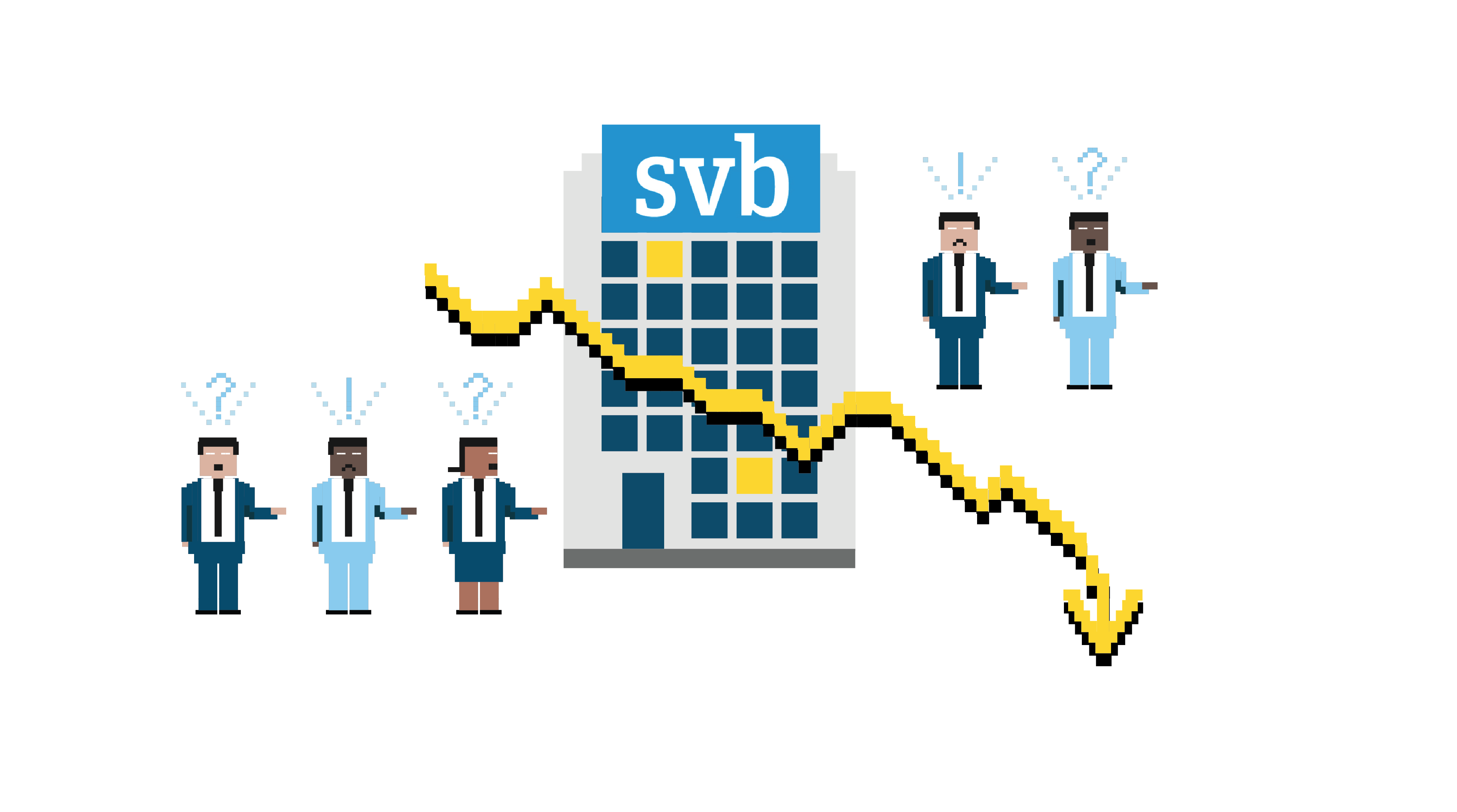[ad_1]

When Silicon Valley Bank, collapsed on Friday, it created the second-largest bank failure in US history.
Here’s how it all came tumbling down:
As the bank grew to be the 16th largest in America, SVB invested most of their funds in long-term bonds when rates were near zero.
This may have seemed like a good idea at the time, but when interest rates rose those long term bond prices fell, cratering their investments.
On Wednesday, SVB announced that it suffered a $1.8 billion after-tax loss and urgently needed to raise more capital to address depositor concerns.
The market reacted sharply and SVB lost over $160 billion dollars in value in 24 hours.
As the stock fell, depositors moved quickly to withdraw money from the bank.
Banks only carry a fraction of depositors’ money in cash – called a fractional reserve. This meant that SVB couldn’t give depositors their money because it was held in these long-term bond investments that were no longer worth as much.
In short, SVB didn’t have the cash they needed to fulfill their obligations to their customers. As panicked withdrawal continued, a bank run was well-underway.
So the Federal Deposit Insurance Corporation took over SVB on Friday to get depositors access to their money by Monday, and because the bank’s troubles posed a systemic risk to the financial system.
That’s the sort of action that the ‘FDIC Insured’ sign that you may have seen in your local bank represents.
It wasn’t just depositors who were distancing their assets from the bank.
Bloomberg reports that SVB CEO Greg Becker sold $3.6 million of company stock less than two weeks before the firm disclosed the extensive losses that led to its demise and that Peter Theil’s Founder’s Fund withdrew millions by Thursday morning.
SVB had $209 billion in assets and $175.4 billion in deposits at the time of failure, the FDIC said in a statement. Many of SVB’s depositors were technology workers and venture-capital backed companies.
“That’s why venture capital exists in the first place,” said Calvin Henderson, investment analyst at Canada’s National Angel Capital Organization. “It provides long-term risk capital that traditional investors won’t provide.”
But it ended up being the government, not investors, who came to depositors’ rescue.
Before the FDIC stepped in, depositors could only access up to $250,000, the insurance limit for their accounts, but several companies had well over that amount in the bank, including popular companies like Roblox and Etsy.
Federal regulators said depositors from both banks will get their money. The Federal Reserve, the Treasury Department and the FDIC said regulators took the unusual step of guaranteeing the deposits because SVB presented a major risk for the U.S. economy.
Signature Bank in New York, was also closed on Sunday after its customers began withdrawing cash too quickly. State regulators said they took over the bank to stabilize financial systems.
The fallout from Silicon Valley Bank’s failure prompted President Joe Biden to speak to taxpayer concerns from the White House today.
“Americans can have confidence that the banking system is safe,” Biden said at the White House. “Your deposits will be there when you need them.”
SVB’s ripple effect by the numbers: How the collapse is affecting other US banks
Contributing: George Petras, Stephen Beard, Elisabeth Buchwald, Francesca Chambers, and Shawn J. Sullivan.
[ad_2]
Source link





